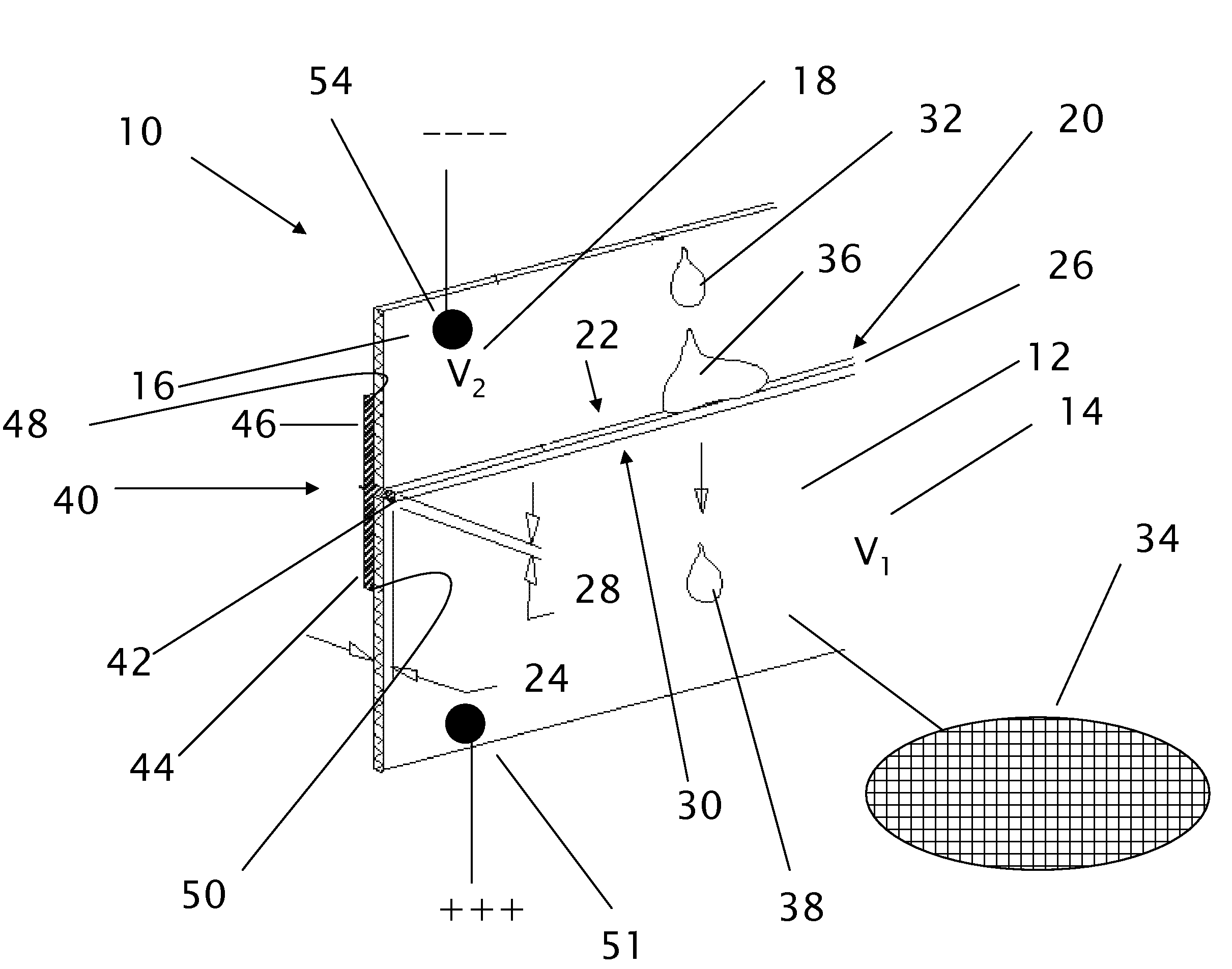Pest deterrent fence
a technology of deterrent fences and pests, applied in the field of pest deterrent fences, can solve the problems of ineffective barrier, rapid depletion of battery power sources, and deterring the animal from further progress, and achieve the effect of promoting moisture beading and falling
- Summary
- Abstract
- Description
- Claims
- Application Information
AI Technical Summary
Problems solved by technology
Method used
Image
Examples
Embodiment Construction
[0019]Referring to FIG. 1, my invention (10) is a pest deterrent fence to keep snails, slugs, worms and similar garden pests away from plants. Problems associated with previous known deterrent fences of this type include the wetting of the dielectric between conducting surfaces to such an extend that there is a current rack between them. This results in the same voltage on both sides of the dielectric and renders the fence ineffective in wet climates or other areas with heavy humidity and dew. It also results in excessive power use and battery depletion. Through much experimentation in the wet climates of Vancouver Island, I have discovered that a certain type and configuration of dielectric resists wetting and causes excessive moisture to bead and drop from the dielectric of my invention without contacting both sides of the dielectric.
[0020]My invention comprises a first conductive surface (12) having a first voltage potential V1 (14) and a second conductive surface (16) having a s...
PUM
 Login to View More
Login to View More Abstract
Description
Claims
Application Information
 Login to View More
Login to View More - R&D
- Intellectual Property
- Life Sciences
- Materials
- Tech Scout
- Unparalleled Data Quality
- Higher Quality Content
- 60% Fewer Hallucinations
Browse by: Latest US Patents, China's latest patents, Technical Efficacy Thesaurus, Application Domain, Technology Topic, Popular Technical Reports.
© 2025 PatSnap. All rights reserved.Legal|Privacy policy|Modern Slavery Act Transparency Statement|Sitemap|About US| Contact US: help@patsnap.com



